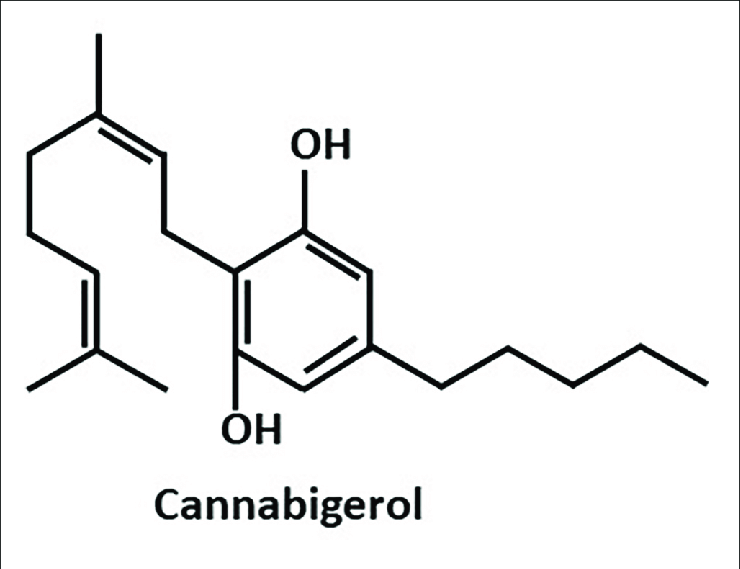
“The constant search for new pharmacologically active compounds, especially those that do not exhibit toxic effects, intensifies the interest in plant-based ingredients and their potential use in pharmacotherapy.
One of the plants that has great therapeutic potential is Cannabis sativa L., a source of the psychoactive Δ9-tetrahydrocannabinol (Δ9-THC), namely cannabidiol (CBD), which exhibits antioxidant and anti-inflammatory properties, and cannabigerol (CBG)-a biologically active compound that is present in much smaller quantities.
CBG is generated during the non-enzymatic decarboxylation of cannabigerolic acid, a key compound in the process of biosynthesis of phytocannabinoids and consequently the precursor to various phytocannabinoids. By interacting with G-protein-coupled receptors, CBG exhibits a wide range of biological activities, inter alia, anti-inflammatory, antibacterial and antifungal activities, regulation of the redox balance, and neuromodulatory effects.
Due to the wide spectrum of biological activities, CBG seems to be a very promising compound to be used in the treatment of diseases that require multidirectional pharmacotherapy. Moreover, it is suggested that due to the relatively rapid metabolism of cannabigerol, determination of the concentration of the phytocannabinoid in blood or oral fluid can be used to determine cannabis use. Therefore, it seems obvious that new therapeutic approaches using CBG can be expected.”
https://pubmed.ncbi.nlm.nih.gov/35887277/
“Although plants and their components have been used in therapeutic activities for several thousand years, their conscious use as elements of drugs, dietary supplements, cosmetics, and other products exhibiting biomedical properties are the result of research carried out over the last 20 years. One of the plants whose ingredients are more and more often studied for use in biomedical and pharmaceutical activities is Cannabis sativa L. At the same time, it should be noted that compounds obtained from Cannabis sativa L. are usually considered more beneficial than synthetic ones, because the latter may cause unwanted side effects when used for longer periods of time.”
“At the moment, cannabigerol is one of the least-known phytocannabinoids found in Cannabis sativa L., which, however, shows promising potential in therapeutic actions. Considering that both CBG and its precursors and metabolites are lipophilic, it favors the penetration the penetration through biological membranes and indicates the possibility of biological activity in the lipid sphere mainly through interactions with the endocannabinoid system, including G-protein-coupled receptors. As a result of these interactions as well as direct actions, CBD exhibits antioxidant and anti-inflammatory properties, while both CBG and CBGA as well as its synthetic derivatives exhibit neuromodulatory effects. Moreover, CBG has been shown to reduce the survival of glioblastoma cells, similar to temozolomide used both in monotherapy and with CBG. So far, however, the data in this regard are inconclusive and, moreover, come from in vitro and animal studies that require validation on human tissues and cells used ex vivo, prior to possible clinical trials. No harmful effect of CBG on the human body has been found so far, and the proven biological activity indicates CBG and its derivatives as very promising natural compounds that should be thoroughly tested both in vitro and in vivo in order to unequivocally determine the therapeutic usefulness, especially with regard to inflammatory diseases. Therefore, it seems obvious that new therapeutic approaches using the non-psychoactive ingredients of Cannabis sativa L, including CBG, can be expected in the nearest future.”
https://www.mdpi.com/1422-0067/23/14/7929/htm

